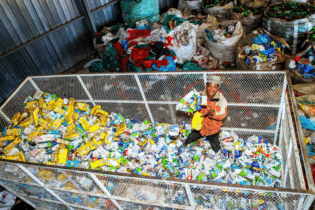For African countries, solar power is the solution to coal-based electricity supply – but this is easier said than done! Where does Africa really stand on solar power, and is our current coal supply dwindling?
A shocking estimate of 1.5 billion people in developing countries have no access to electricity, and more than 80% of these people live in sub-Saharan Africa or South Asia. According to research conducted in the UK, over 90% of power in South Africa is derived from burning coal – a number which is set to double over the next 25 years. How much is enough?While numerous research figures show that coal resources are being exhausted and will not be able to meet the growing capacity, there are also those figures that show an abundance of coal supply for future years, South Africa in particular. In his paper delivered at the McCloskey 2011 Coal Conference, Eskom’s chief commercial officer, Dan Marokane, stated that the supply of coal to Eskom power plants is at risk due to the potential increase of exports. Susan Shabangu, Minister of Mineral Resources, in her presentation, mentioned the restrictive regulation to control excessive coal exports. The response of the industry was fast, with the Chamber of Mines saying that coal exports were not affecting Eskom’s future supply. David Price of IHS Cambridge Energy Research Associates (US), went on to mention in his presentation that dwindling imports from the EU, coupled with carbon capture issues, have made India the new preferred destination for South African coal. Despite which research figures or statements one chooses to believe, coal-based electricity generation is detrimental to the environment, and one does not need scientific research or studies to prove this statement. Despite South Africa’s ‘developing country’ status, it is alarmingly clear that there is a need for inexpensive, low-carbon ways to improve on electricity access. The solution does not always lie in costly grid expansion, as many government leaders are realising, but rather in affordable, renewable sources of power – and solar energy ranks amongst the top of the list as one such solution. According to environmental-expert.com, the Earth receives more solar energy in one hour than the world population consumes in an entire year. This kind of ‘jump up and take notice’ statistic makes it very clear that the solution to the uncertain future of power could very possibly lie in natural energy from the sun. SESSA’s perspective
According to Irvan Damon, ambassador at the Sustainable Energy Society of Southern Africa (SESSA), globally, the growth in solar is impressive: the average annual growth rate for the period 2000 to 2008 was 20.1%, with China, Europe and USA leading the way. This growth rate means that the area of glazed water ‘collectors’ installed in 2008 was four times larger than that installed in 2000.
“Africa experiences some of the highest levels of solar radiation in the world,” Damon explains. “Our potential average is between 4.5 and 6.5 kWh/m2 compared to Europe’s 2.5 KWh/m2. It therefore makes sense to use this sustainable alternative to fossil fuel energy for water heating and power generation.”
However, he states, that as a country, South Africa is lagging behind many global countries that have adopted solar with greater alacrity. For example, according to reFOCUS, in August 2004, Israel had 608m² installed capacity, generating 426kW per 1 000 inhabitants, Greece had 298m² installed capacity generating, 209kW per 1 000 inhabitants and Austria 220m², generating 154kw per 1 000 inhabitants. At the same time, South Africa had just 16m² installed capacity, generating 11kW per 1 000 inhabitants. Damon says that SESSA’s vision is to attain one square meter solar collector per South African citizen by the year 2020. “We are establishing baseline data at the moment to give create a better understanding of how far we have come in terms of installed collector surface area.” He added that the other benefit of a growth in the adoption of solar is that it will fuel the green economy. The green economy has been identified as a as key priority area for future job creation with our, Min Patel having a stated expectation of over 300 000 green collar jobs to be created during the next decade, 20 000 in the next two years. Green collar jobs, both direct and indirect, can furthermore be encouraged if government and its agencies, together with NPOs like SESSA, create the necessary positive policy signals to stimulate market’s appetite. “We do have some macro-economic challenges. For example, ‘green-trepreneurs’ need seed-finance either from local finance houses, development finance institutions or NPOs,” he continues. To reiterate, government must ensure that the investment policy environment is stable and predictable; and there should be less red tape.” There’s plenty else that SESSA should be doing but as Damon says, “That’s a start to our long, but exciting walk to greendom.” Going solar presents a significant number of positive factors including benefitting from government incentives and rebates, dramatically reducing a company and household’s carbon footprint, and operating on a sustainable platform. Further validations on the idea of solar power are emerging such as a cost-effective solution against power cuts, electricity tariff hikes and high carbon emissions.







